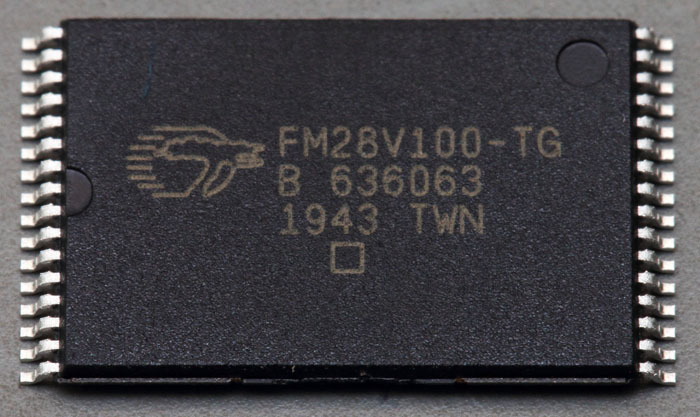
The FM28V100 is an FRAM with the same specifications as the FM24V10 (
https://www.richis-lab.de/RAM01.htm). The only difference is the parallel interface of the FM28V100. It has 16 address inputs and an 8-bit wide data interface. The FM24V10, on the other hand, is available with an SPI or I2C interface.
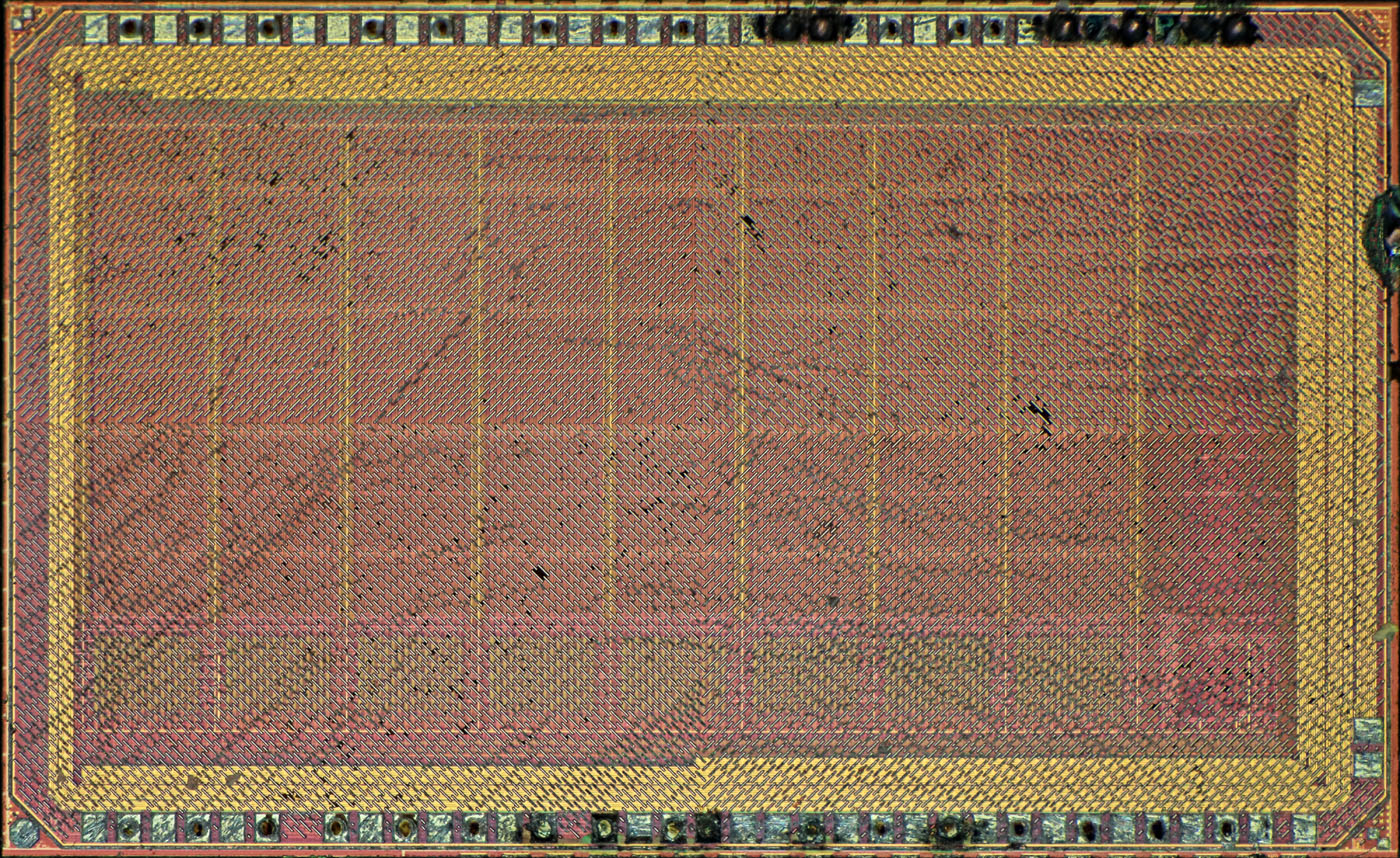
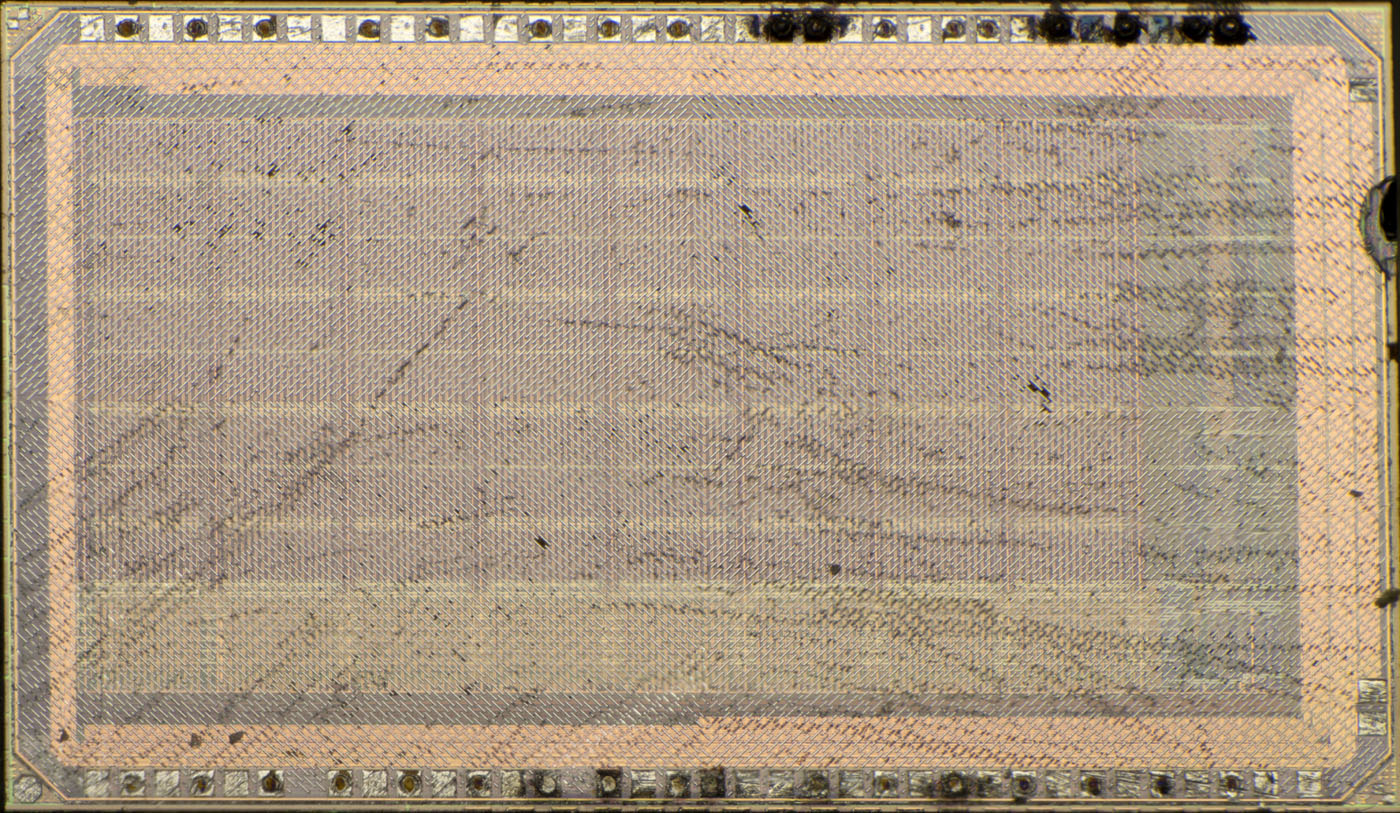
Apparently, the FM28V100 uses the same design as the FM24V10. This could already be surmised, as the die has many more bondpads than are used in the FM24V10.
However, the design of the die is not completely identical. The FM28V100 has an additional metal layer, but this is only filled with a dummy structure.
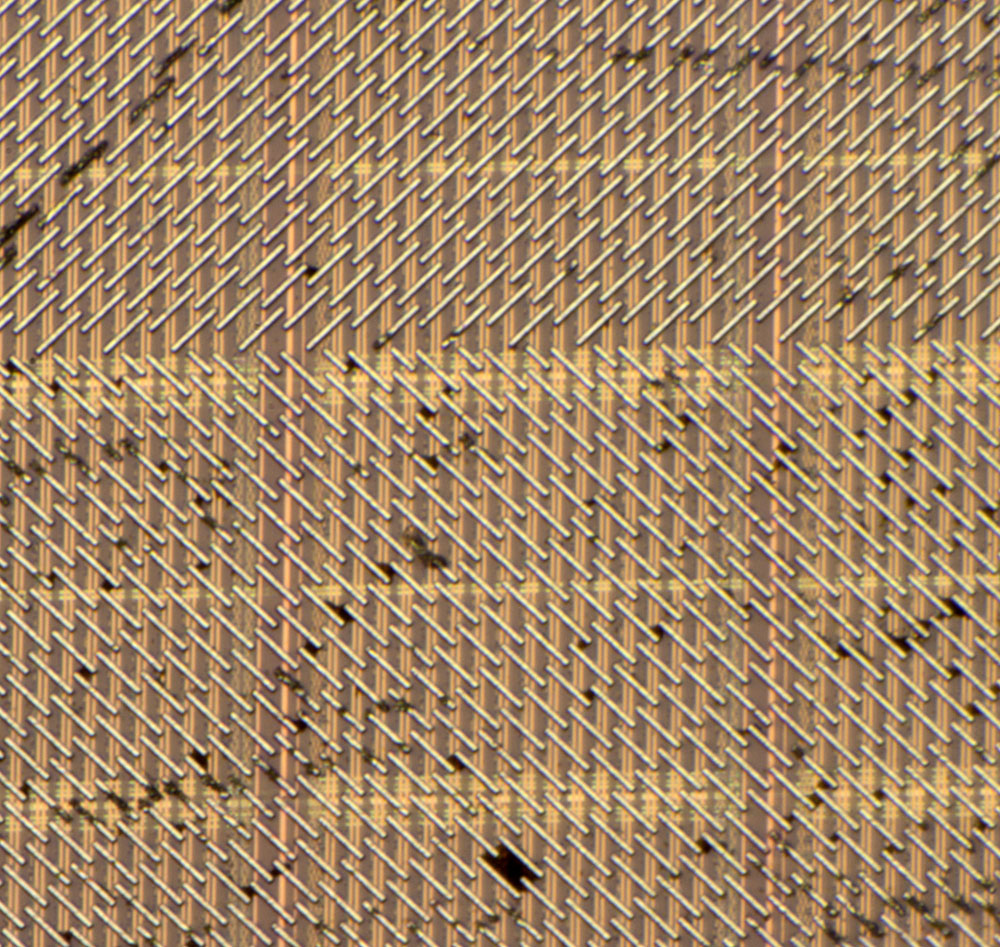
Dummy structures are usually added so that the layers can be processed as evenly as possible. If layers are very inhomogeneous, it can happen, for example, that a grinding process has not yet removed enough material at one point, while at another point it has already penetrated too deep into the structures. In this case, however, the top metal layer is not utilised at all. It was not present at all in FM24V10. It remains unclear what purpose the dummy structures fulfil.
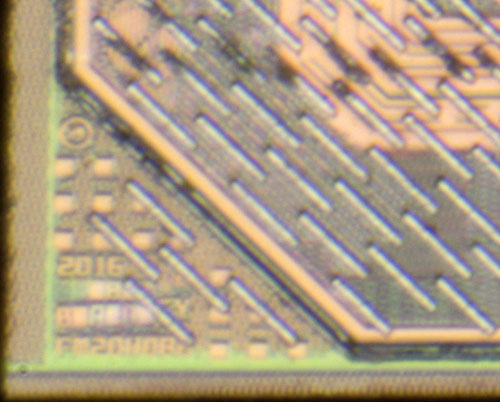
Apart from the dummy structure, there is no superficial difference between the FM28V100 and the FM24V10. However, there is a small update in the top right-hand corner. This shows the year 2016, while the FM24V10 shows the year 2008.
https://www.richis-lab.de/ROM09.htm 